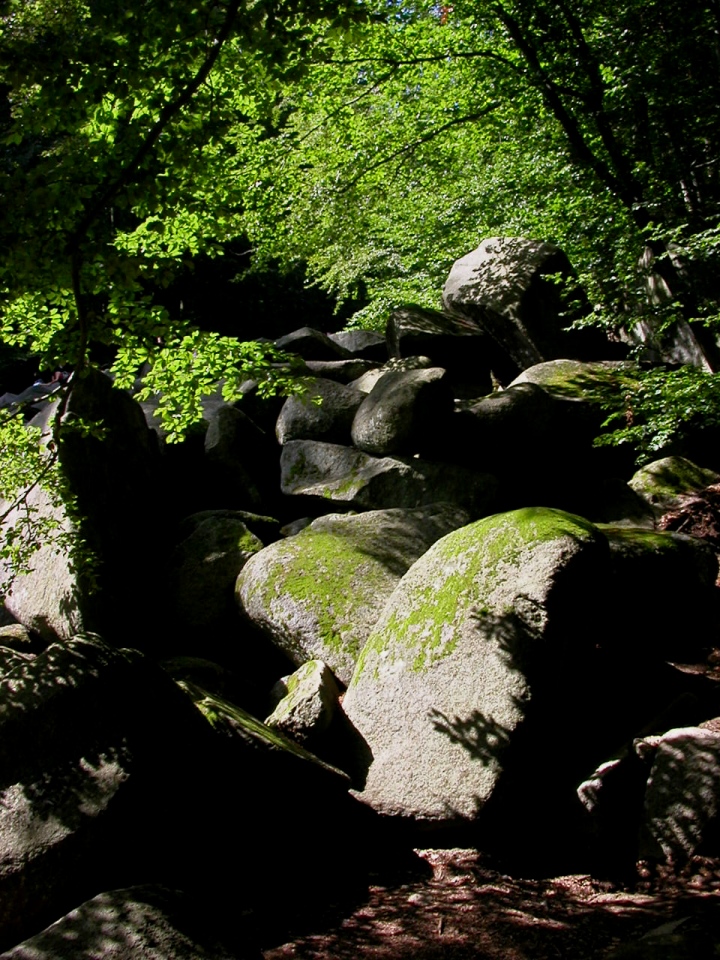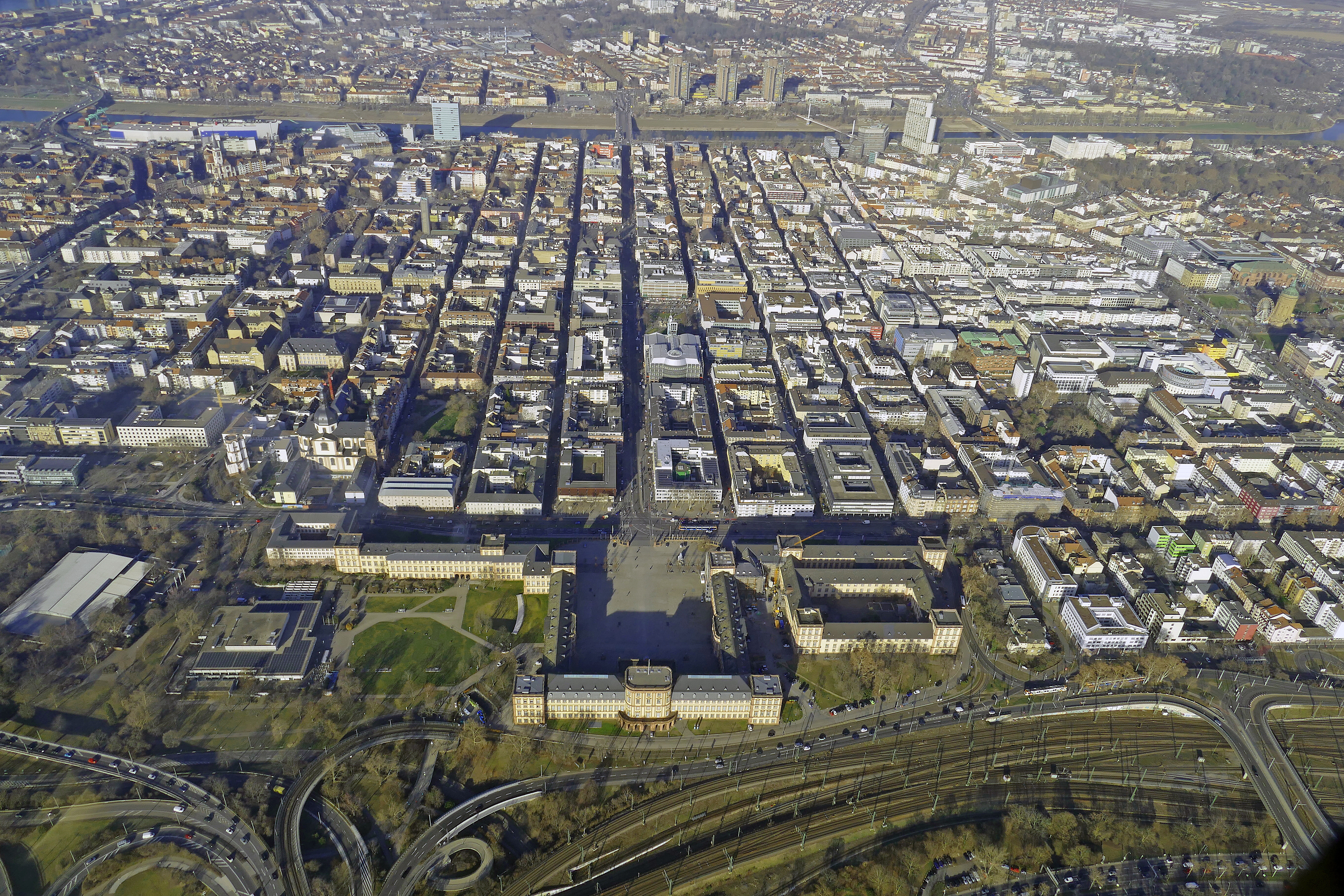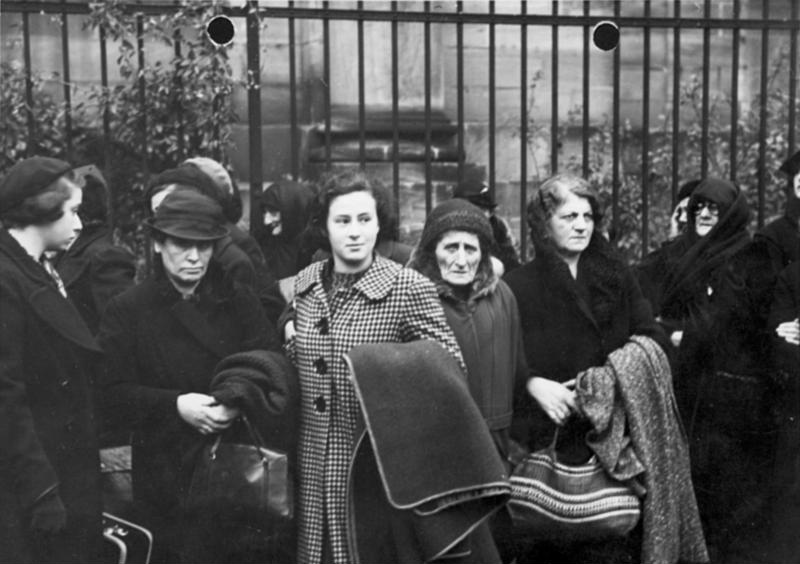|
Weinheim
Weinheim (; pfl, Woinem) is a town with about 43,000 inhabitants in northwest Baden-Württemberg, Germany. It is in the Rhine-Neckar Metropolitan Region, approximately north of Heidelberg and northeast of Mannheim. Weinheim is known as the "Zwei-Burgen-Stadt", the "town of two castles", after two fortresses overlooking the town from the edge of the Odenwald in the east. Geography Weinheim is situated on the Bergstraße theme route on the western rim of the Odenwald. The old town lies in the valley, with the new part of town further to the west. The Market Square is filled with numerous cafes, as well as the old ''Rathaus'' (guildhall). Further to the south is the ''Schlossgarten'' (Palace Garden) and the ''Exotenwald'' (Exotic Forest), which contains species of trees imported from around the world, but mostly from North America and Japan. History Weinheim celebrated its 1250th anniversary in 2005. The earliest record of Weinheim dates back to 755 CE, when the name "Winenh ... [...More Info...] [...Related Items...] OR: [Wikipedia] [Google] [Baidu] |
Weinheimer Senioren-Convent
The Weinheimer Senioren-Convent (abbreviation: WSC) is the second oldest association of German Studentenverbindungen. It comprises roughly 60 German ''Corps'', all of which are based upon the principle of tolerance. The WSC had been founded in Frankfurt in 1863 under the name of „Allgemeiner Senioren-Convent" (ASC). Soon it moved its venue to Weinheim near Heidelberg in 1864 and it adopted the name of Weinheimer Senioren Convent in 1867. The WSC has built a castle near Weinheim to suit their needs - the Wachenburg. It has merged the Corps of the Rudolstädter Senioren-Convent (RSC) and the Naumburger Senioren-Convent (NSC) in 1934. Since 1955 the WSC has an association treaty with the Kösener Senioren-Convents-Verband (abbreviated KSCV, the oldest and largest association of Corps). In 1997, members of the Weinheimer Senioren Convents (WSC "Corps") came to the United States to discuss the possibility of forming an international fraternity cooperation with Tau Kappa Epsilon ... [...More Info...] [...Related Items...] OR: [Wikipedia] [Google] [Baidu] |
Miramar (Weinheim)
Miramar is a water park, salt-water spa and sauna complex opened in 1973 at the Waidsee Lake, Weinheim, Germany. , approximately 50% of the 650,000 annual visitors pay extra for the Sauna area. The catchment area for visitors covers a radius, including Frankfurt am Main to the north, and Pforzheim to the south. The main bathing area contains a wave pool and several slides. there were nine water slides in the main indoor pool area with various levels of difficulty and speed, plus jacuzzis and outside areas. The thermal spa area has saltwater pools, and these pools are also used to offer physiotherapy. The sauna area is designated as a nudist/ () area, which is extended to the swimming and thermal spa areas on Tuesday evenings. History The original swimming bath complex owned by the Town of Weinheim was offered for sale. In late-1987 Miramar was purchased by the Steinhart family for the symbolic price of one Deutsche Mark, after which significant expansion and development fol ... [...More Info...] [...Related Items...] OR: [Wikipedia] [Google] [Baidu] |
Exotenwald Weinheim
The Exotenwald Weinheim (about 60 hectares) is a forest arboretum located beside the Schlosspark in Weinheim, Baden-Württemberg, Germany. It is open daily without charge. The arboretum was established in 1871 by Christian Friedrich Gustav Freiherr von Berckheim (1817–1889), former Minister of State and Großhofmeister at the court in Karlsruhe, on the grounds of a baroque estate founded in 1725. His initial plantings were extensive – between 1872 and 1883 he planted some 12,494 trees on 36 hectares – with specimens purchased predominantly from specialist nurseries in Orléans, Ghent, and Exeter. Approximately 1460 sequoia trees were planted in this interval within a site. Although the climate has not proved entirely hospitable, and the original catalog of 150 species has subsequently dwindled to about 50, many mature specimens still remain, including original plantings of ''Calocedrus decurrens'', ''Sequoiadendron giganteum'', ''Pinus jeffreyi'', ''Pinus pondero ... [...More Info...] [...Related Items...] OR: [Wikipedia] [Google] [Baidu] |
Odenwald
The Odenwald () is a low mountain range in the German states of Hesse, Bavaria and Baden-Württemberg. Location The Odenwald is located between the Upper Rhine Plain with the Bergstraße and the ''Hessisches Ried'' (the northeastern section of the Rhine rift) to the west, the Main and the Bauland (a mostly unwooded area with good soils) to the east, the Hanau-Seligenstadt Basin – a subbasin of the Upper Rhine Rift Valley in the Rhine-Main Lowlands – to the north and the Kraichgau to the south. The part south of the Neckar valley is sometimes called the ''Kleiner Odenwald'' ("Little Odenwald"). The northern and western Odenwald belong to southern Hesse, with the south stretching into Baden. In the northeast, a small part lies in Lower Franconia in Bavaria. Geology The Odenwald, along with other parts of the Central German Uplands, belongs to the Variscan, which more than 300 million years ago in the Carboniferous period ran through great parts of Europe. The cause ... [...More Info...] [...Related Items...] OR: [Wikipedia] [Google] [Baidu] |
Windeck Castle (Weinheim)
Windeck Castle (German: ) stands on a small hill in Weinheim on the Bergstraße. It was built around 1100 to protect the inhabitants of the Lorsch monastery. It was hugely damaged in 1674 by the troops of King Louis XIV of France. In 1960, the ruins were restored, the palace walls newly erected and the donjon safeguarded. It was acquired in 1978 by the city of Weinheim. In the 1980s, archaeological examinations and conservation works were carried out, and the ground plan was found, which gave an idea of the dimensions of the fortress. Today, the ruins of a fortress Windeck are classified as a historical monument. A beer garden operates on its premises. See also * Wachenburg The Wachenburg () is a castle on a hill overlooking Weinheim an der Bergstrasse, in Baden-Württemberg, Germany Germany,, officially the Federal Republic of Germany, is a country in Central Europe. It is the second most populous ... Buildings and structures in Weinheim Ruined ... [...More Info...] [...Related Items...] OR: [Wikipedia] [Google] [Baidu] |
German Student Corps
Corps (or Korps; "''das ~''" ('' n''), (''sg.''), (''pl.'')) are the oldest still-existing kind of ''Studentenverbindung'', Germany's traditional university corporations; their roots date back to the 15th century. The oldest corps still existing today was founded in 1789. Its members are referred to as corps students (''Corpsstudenten''). The corps belong to the tradition of student fraternities which wear couleur and practice academic fencing. The corps are organized in two federations, the ''Kösener Senioren-Convents-Verband'' (''KSCV'') and the ''Weinheimer Senioren-Convent'' (''WSC''). Together, they comprise 162 Corps throughout Germany, Austria, Belgium, Estonia, Latvia, Hungary, Switzerland and Lithuania. The German Student Corps were traditionally recruited from the nobility, royalty, and social elite, and are traditionally viewed as more aristocratic and elitist than other German student fraternities such as the Catholic Cartellverband and the Burschenschaften. T ... [...More Info...] [...Related Items...] OR: [Wikipedia] [Google] [Baidu] |
Wachenburg
The Wachenburg () is a castle on a hill overlooking Weinheim an der Bergstrasse, in Baden-Württemberg, Germany Germany,, officially the Federal Republic of Germany, is a country in Central Europe. It is the second most populous country in Europe after Russia, and the most populous member state of the European Union. Germany is situated betwe .... It was built between 1907 and 1928 by the Weinheimer Senioren-Convent, a Corps of former students. The castle contains a restaurant with a nice view of the country. See also * Windeck Castle (Weinheim) Buildings and structures in Weinheim {{BadenWürttemberg-struct-stub ... [...More Info...] [...Related Items...] OR: [Wikipedia] [Google] [Baidu] |
Rhine-Neckar Metropolitan Region
The Rhine-Neckar Metropolitan Region (german: Metropolregion Rhein-Neckar, ), often referred to as Rhein-Neckar-Triangle, is a polycentric metropolitan region located in south western Germany, between the Frankfurt/Rhine-Main region to the North and the Stuttgart Region to the South-East. Rhine-Neckar has a population of some 2.4 million with major cities being Mannheim, Ludwigshafen and Heidelberg. Other cities include the former Free imperial cities of Speyer and Worms. The metro area also encompasses parts of the Baden and Palatinate wine regions, the second largest vine region of the country called Deutsche Weinstraße and territory from the three federal states of Baden-Württemberg, Rhineland-Palatinate and Hesse. It has a strong local identity as a successor of the historical Electorate of the Palatinate state. The region is named after the rivers Rhine and Neckar, which join at Mannheim. Since 2005, the region is officially recognized as a European Metropolitan Area. ... [...More Info...] [...Related Items...] OR: [Wikipedia] [Google] [Baidu] |
Mannheim
Mannheim (; Palatine German: or ), officially the University City of Mannheim (german: Universitätsstadt Mannheim), is the second-largest city in the German state of Baden-Württemberg after the state capital of Stuttgart, and Germany's 21st-largest city, with a 2020 population of 309,119 inhabitants. The city is the cultural and economic centre of the Rhine-Neckar Metropolitan Region, Germany's seventh-largest metropolitan region with nearly 2.4 million inhabitants and over 900,000 employees. Mannheim is located at the confluence of the Rhine and the Neckar in the Kurpfalz (Electoral Palatinate) region of northwestern Baden-Württemberg. The city lies in the Upper Rhine Plain, Germany's warmest region. Together with Hamburg, Mannheim is the only city bordering two other federal states. It forms a continuous conurbation of around 480,000 inhabitants with Ludwigshafen am Rhein in the neighbouring state of Rhineland-Palatinate, on the other side of the Rhine. Some northe ... [...More Info...] [...Related Items...] OR: [Wikipedia] [Google] [Baidu] |
Gurs Internment Camp
Gurs internment camp was an internment camp and prisoner of war camp constructed in 1939 in Gurs, a site in southwestern France, not far from Pau. The camp was originally set up by the French government after the fall of Catalonia at the end of the Spanish Civil War to control those who fled Spain out of fear of retaliation from Francisco Franco's regime. At the start of World War II, the French government interned 4,000 German Jews as "enemy aliens", along with French socialist political leaders and those who opposed the war with Germany. After the Vichy government signed an armistice with the Nazis in 1940, it became an internment camp for mainly German Jews, as well as people considered dangerous by the government. After France's liberation, Gurs housed German prisoners of war and French collaborators. Before its final closure in 1946, the camp held former Spanish Republican fighters who participated in the Resistance against the German occupation, because their st ... [...More Info...] [...Related Items...] OR: [Wikipedia] [Google] [Baidu] |
Kristallnacht
() or the Night of Broken Glass, also called the November pogrom(s) (german: Novemberpogrome, ), was a pogrom against Jews carried out by the Nazi Party's (SA) paramilitary and (SS) paramilitary forces along with some participation from the Hitler Youth and German civilians throughout Nazi Germany on 9–10 November 1938. The German authorities looked on without intervening.German Mobs' Vengeance on Jews", ''The Daily Telegraph'', 11 November 1938, cited in The name (literally 'Crystal Night') comes from the shards of broken glass that littered the streets after the windows of Jewish-owned stores, buildings and synagogues were smashed. The pretext for the attacks was the assassination of the German diplomat Ernst vom Rath by Herschel Grynszpan, a 17-year-old German-born Polish Jew living in Paris. Jewish homes, hospitals and schools were ransacked as attackers demolished buildings with sledgehammers. Rioters destroyed 267 synagogues throughout Germany, Austria and the ... [...More Info...] [...Related Items...] OR: [Wikipedia] [Google] [Baidu] |
Libanon Cedar In Weinheim
Lebanon ( , ar, لُبْنَان, translit=lubnān, ), officially the Republic of Lebanon () or the Lebanese Republic, is a country in Western Asia. It is located between Syria to the north and east and Israel to the south, while Cyprus lies to its west across the Mediterranean Sea; its location at the crossroads of the Mediterranean Basin and the Arabian hinterland has contributed to its rich history and shaped a cultural identity of religious diversity. It is part of the Levant region of the Middle East. Lebanon is home to roughly six million people and covers an area of , making it the second smallest country in continental Asia. The official language of the state is Arabic, while French is also formally recognized; the Lebanese dialect of Arabic is used alongside Modern Standard Arabic throughout the country. The earliest evidence of civilization in Lebanon dates back over 7000 years, predating recorded history. Modern-day Lebanon was home to the Phoenicians, a m ... [...More Info...] [...Related Items...] OR: [Wikipedia] [Google] [Baidu] |


.jpg)
.jpg)




